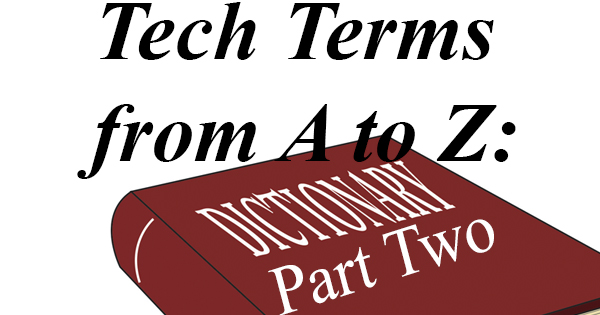
Last week’s Finish Line Blog featured part one of our new series spotlighting technical terms that are ubiquitous (shout out to Uncle Ed), but often misunderstood. If you missed the numbers and “A through “D”, click here to read it. Clear communication is paramount to first identifying and then fixing any problems that might be experienced, and the goal of this series is to make both of our lives easier with a basic understanding of technical jargon. Without further adieu, let’s pick it up with the letter “E”.
You may have noticed “E-911” on your smartphone. The “E” doesn’t stand for “Emergency”. Instead it means “Enhanced 911”. E-911 gives emergency dispatchers additional information, specifically regarding the location a wireless call is originated from. Another wireless capability is “EMS”. “EMS” stands for “Enhanced Messaging Service”. EMS extends basic text messaging to include photos, videos, and long-winded text messages. Ethernet is a hard one. Technically, “Ethernet” refers to a local wired network in a home or business. Practically, many of us use the term “Ethernet cable” to identify a network wire. When talking about a cable (or cord), simply calling it Ethernet isn’t correct. An “executable” file is a file designed to launch or start a program upon double-clicking it. It’s easy to recognize an executable file, because the file extension is labeled “exe”.
If you own an iPhone or iPad, you’re familiar with Facetime. If you don’t, here’s what it is: “Facetime” is a video calling app developed by Apple for its mobile devices. Some technological terms are easy to figure out because they basically mean the same thing in any context. “Firewall” is one of those terms. A “firewall” is a security measure that monitors incoming and outgoing network traffic, and analyzes whether or not to allow the traffic according to a list of pre-defined rules. Many anti-virus software products include a firewall as part of their service, and Microsoft provides one of their own in each version of Windows that they release. A “flash drive” is a portable file storage device. Flash drives plug into any available USB port on a computer. You might hear people refer to a flash drive as a thumb drive.
A “gateway” is a device that connects two networks. It acts as a “gate” that allows traffic into and out of a network. Examples of gateway devices include routers, firewalls, and servers. “GIF” stands for “Graphics Interchange Format”. GIFs are images that contain reduced file sizes so they can be downloaded faster. These are often the images of choice for website designers. Multiple images can be made into an “animated GIF”. A “gigabyte” (Gb) is a unit of data measurement that is equivalent to one billion bytes of information (give or take – save your angry letters). Hard drive space and RAM are typically expressed in terms of how many gigabytes they can store. A “gigahertz” is a unit of measurement that is equivalent to one billion hertz (again, give or take). It is typically used to describe the CPU or RAM’s clock speed.
A “hard drive” is the piece of hardware in a computer that stores data. Your photos, music, documents, videos, and programs are saved to the hard drive. You’ll see hard drive storage space listed in either gigabytes or terabytes. For the “mature” crowd, “#” is no longer known as the pound sign in the technological vernacular. What you’re actually seeing is a hashtag. A “hashtag” is basically a keyword used to describe a post on social media. It’s used to categorize posts, and start a conversation. Hashtags originated on Twitter, and have since become popular on Facebook and Instagram as well. A “host” refers to any computer that is accessible over a network. Hosts have their own name so it’s easy to tell each computer apart on the network. Hosts may share files among other hosts on the network. A “web host” is a server that stores all of the files and pages that make up a website, and publishes them to the Internet.
We’ll hold at “H” and bring you “I”, “J”, “K”, and “L” in part three of “Tech Terms from A to Z” next week!
